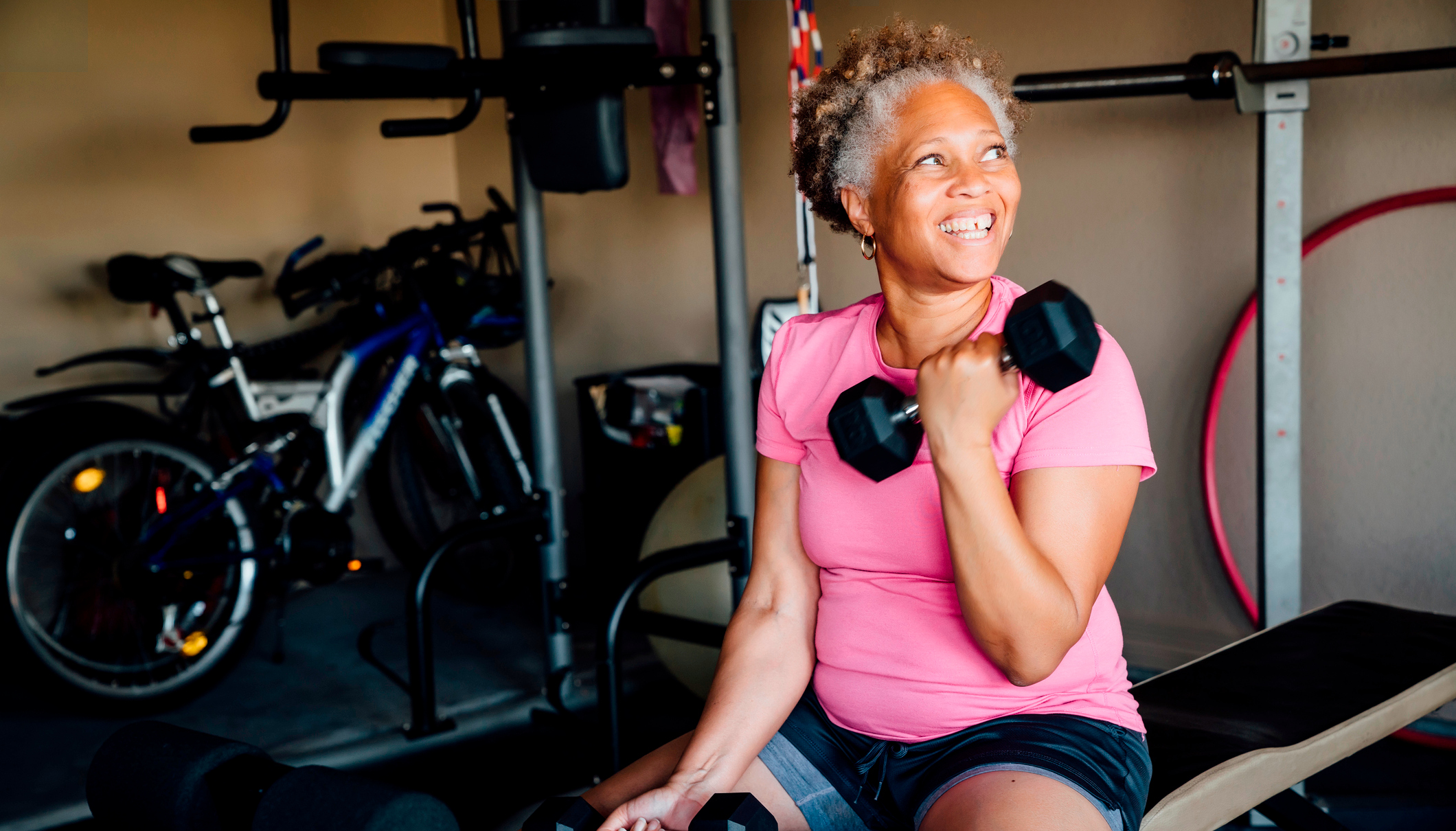This PT’s beginner-friendly strength plan helps build muscle and balance in just four weeks
Follow the three full-body workouts in this tried-and-tested plan to feel the difference physically and mentally


As we age, we lose muscle mass and bone density, which can increase the risk of falls, fractures and long-term health issues like osteoporosis. One way to counteract these elements of aging is to strength train.
Many people correctly associate strength training with building muscle, but lifting weights also helps to boost bone strength, and support better balance, posture and mobility. It’s one of the most effective ways to future-proof your body.
I decided to swap my usual cardio routine for strength training for a month, and secured a strength training plan tailored for women from certified personal trainer Emma Simarro.
The plan involves performing three full-body workouts a week for several weeks. With consistent effort, Simarro says you can expect to feel noticeably stronger within four to six weeks.
I certainly felt stronger after four weeks, but that wasn’t the half of it. I had more energy and mental clarity, but perhaps most importantly, I surprised myself with what I was able to do—my first full push-up for one.
Simarro’s plan was perfect for beginners like me and she agreed to let me share it with Fit&Well readers.
How to do this strength training plan
Before adding any weight, focus on nailing your technique: quality of movement always comes first. Good form not only protects your joints but ensures you’re targeting the right muscles.
Start your week with achievable workout ideas, health tips and wellbeing advice in your inbox.
Simarro has recorded video demonstrations for every exercise in the plan, which you’ll find below.
Once your form feels solid, introduce weights that challenge you when doing the recommended number of sets and reps.
Wondering exactly what sets and reps are? Reps is short for repetitions or the number of times you repeat a single exercise before you take a rest, that group of repetitions is described as a set. So when you read, “Dumbbell goblet squat: 3 x 10-12 reps” below, it means you should do 10-12 repetitions of a goblet squat to complete one set, and perform three sets in total.
Rest for between 45 and 90 seconds between sets, depending on your experience and fitness level. You should be recovered and ready to go by the end of the rest period.
How do you know if the weight is challenging enough? By the end of each set, you should feel like you could complete one or two more reps, but they’d be tough. That’s a good sign you’re working at the right intensity.
Another way to check? You shouldn’t be able to hold a conversation from the halfway point of the set.
Also, strength training is about control and power, not speed: if you can move too quickly, your weight likely isn’t heavy enough.
Finally, follow this breathing tip—exhale on exertion. Breathe out during the effort phase of each movement, for example, as you push, pull or lift. Each rep should feel purposeful and focused.
What equipment do you need to do this plan?
Ideally, you need a range of dumbbells to follow this plan, but when I followed it, I improvised at first using food cans and bottles filled with water. I enjoyed strength training so much, though, that I invested in dumbbells after a few weeks.
“I think having a range of dumbbells is important,” says Simarro, “as we will naturally be stronger in some exercises than others. For example, we can squat much more than we can biceps curl, so you will need different weights for these to challenge the muscles accordingly. I think a range of three separate dumbbells—e.g. 3kg, 5kg and 7.5kg—is a great place to start to get the most out of your workouts.”
Workout 1
According to Simarro, most women feel weaker in their upper body, but she believes that’s because it’s never truly been put to the test.
Simarro says it’s a similar story with our glutes. “They are the biggest and should be the most powerful muscles in our body, but our modern lifestyles make them underpowered.”
This workout tackles both areas, consisting of two lower-body lifts, three upper-body moves and a core finisher—a perfect balance for building strength from head to toe.
The exercises:
- Dumbbell goblet squat: 3 x 10-12 reps
- Shoulder press: 3 x 10-12 reps
- Glute bridge: 3 x 10-12 reps
- Floor press: 3 x 10-12 reps
- Bent-over row: 3 x 10-12 reps
- Dead bug: 3-4 x 12 to 20 alternating reps
- Workout 1 form guides
Select "more videos" on the video below to switch between demonstrations of the exercises in workout one.
Workout 2
Women are often prone to shoulder injuries during midlife, so for Simarro, this workout is essential for keeping them strong.
This session combines lower-body strength, shoulder stability, core control and upper-body power.
The exercises:
- Romanian deadlift: 3 x 10-12 reps
- Lateral raise: 3 x 10-12 reps
- Reverse lunge: 3 x 8-10 reps each side
- Dumbbell woodchop: 3 x 10 reps each side
- Renegade row: 3 x 6 reps each side
- Push-up: 3 x 10-12 reps
- Workout 2 form guides
Select "more videos" on the video below to switch between demonstrations of the exercises in workout two.
Workout 3
This session focuses on unilateral movements that challenge one limb at a time and exercises that train core stabilization: ideal for improving muscular imbalances, posture and coordination.
Keep the weights light to start and focus on movement control and alignment.
The exercises:
- Bulgarian split squat: 3 x 8-10 reps each side
- Single-arm row: 3 x 10-12 reps each side
- Step-up: 3 x 8-10 reps
- Chest fly: 3 x 8-10 reps
- Bent-over fly: 3 x 8-10 reps
- Shoulder taps: 3 x 12-20 reps
- Workout 3 form guides
Select "more videos" on the video below to switch between demonstrations of the exercises in workout three.
Holly Treacy is a freelance editor with more than 15 years experience. Previously editor of Natural Health magazine and Health & Wellbeing magazine, Holly specializes in health, wellbeing and lifestyle topics and has edited and written for titles including Stylist, Psychologies, Top Sante, Women's Fitness and Platinum.
She is passionate about women's health, hormonal wellbeing and mental wellness, as well as creating healthy habits as a busy mum of one.
Holly enjoys investigating the mind-body connection and has a holistic approach to health and nutrition. She loves yoga, swimming and walking, especially in the English countryside and she launched, produced and hosted the Walk To Wellbeing podcast.
You must confirm your public display name before commenting
Please logout and then login again, you will then be prompted to enter your display name.
